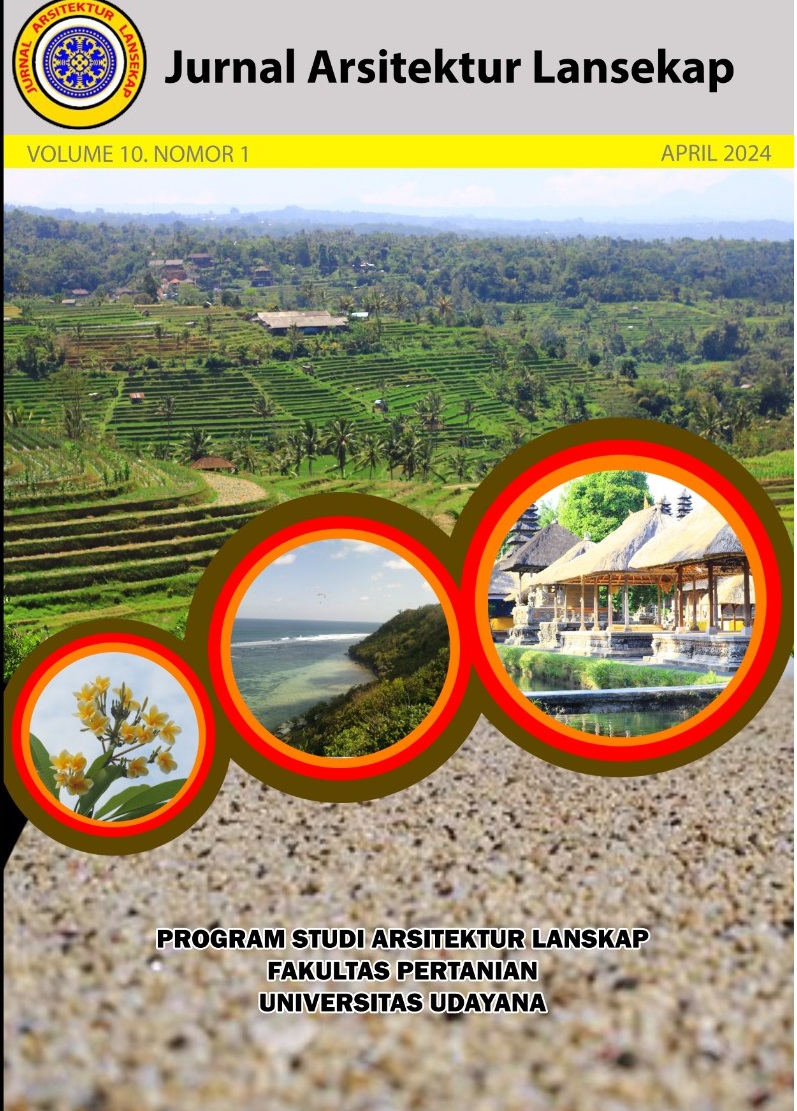Konsep Desain Rurung Sebagai Ruang Terbuka Multifungsi Studi Kasus: Koridor Jalan Karna, Kelurahan Ubud, Gianyar, Bali
Abstract
The Jalan Karna Ubud Corridor is classified as an environmental road that is commonly known as a means of connecting the community with the surrounding space. Along with its development, the road corridor underwent many changes, which caused the comfort and function of this road corridor to be reduced. The purpose of this study is to produce a rurung design concept that can accommodate community activities as a multifunctional facility in the community environment, as well as describe the phenomenon of the rurung space as a multifunctional space. The research method used is a survey method with the data collection process using observation, questionnaires, interviews, and literature studies. The basic concept developed is space as a multifunctional space, namely the application of the concept of open space in order to facilitate various community activities carried out in that space. Thus, it is hoped that the presence of a road corridor as a multi-functional space in facilitating community activities will be able to provide a sense of balance with the balance of needs between users who have differences in each individual community. It is also hoped that the existence of this road corridor can become an icon or distinctive and, at the same time, can become a feature or example in other areas of Bali.
Downloads

This work is licensed under a Creative Commons Attribution-ShareAlike 4.0 International License.
An author who publishes in the Jurnal Arsitektur Lansekap (JAL) agrees to the following terms:
- Author retains the copyright and grants the journal the right of first publication of the work simultaneously licensed under the Creative Commons Attribution-ShareAlike 4.0 License that allows others to share the work with an acknowledgement of the work's authorship and initial publication in this journal
- Author is able to enter into separate, additional contractual arrangements for the non-exclusive distribution of the journal's published version of the work (e.g., post it to an institutional repository or publish it in a book) with the acknowledgement of its initial publication in this journal.
- Author is permitted and encouraged to post his/her work online (e.g., in institutional repositories or on their website) prior to and during the submission process, as it can lead to productive exchanges, as well as earlier and greater citation of the published work (See The Effect of Open Access).
Read more about the Creative Commons Attribution-ShareAlike 4.0 Licence here: https://creativecommons.org/licenses/by-sa/4.0/.







